I was at the Los Angeles jewelry district yesterday and saw a woman with a pair of 2-carats each round diamond studs on her ears. They weren’t sparkly. They weren’t white. They were cloudy and dull. Were they just dirty? It didn’t look like it. I thought about why she may have chosen 2 carats each for earrings versus a sparkly pair of smaller diamonds. It prompted me to write this post on my insider’s guide to choosing the perfect diamonds to help my readers avoid her mistake.
People have varying thresholds of quality they’ll accept when it comes to diamonds. Many people make the mistake to go with the largest size they can afford, compromising on important factors that make diamonds so beautiful. Also, sometimes the reason for a bad diamond purchase is due to poor guidance from the business where the customer bought their diamonds.
There’s a delicate balance of looking at the 4Cs along with other variables before investing in a diamond. I believe that to the naked eye and in natural light, a diamond should sparkle, look white and clear, and be noticeable when someone sees them from conversation view. That’s about 2-3 feet in distance.
Drilling down from here, my standards for an engagement ring are much different than a diamond for pendants, earrings or other jewelry.
Insider’s guide to choosing the perfect diamonds
My rules of diamonds for engagement rings over 1 carat
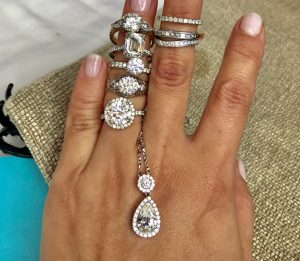
Don’t skimp on quality for size
Invest in the best quality you can afford for an engagement ring. The eye can see more details on the hand than on the ear or neckline. The same diamond as a ring could look off-color or a bit cloudy that would otherwise look gorgeous as an earring or pendant.
Get GIA Certified
- For larger than 1 carat, buy Gemological Institute of America (GIA) or American Gemological Society (AGS) stone. AGS and GIA have the most conservative grading standards on diamonds and are accepted around the world. AGS and GIA stones cost up to 50% more than an EGL stone with the same grading. In the US, GIA stones are much more popular than AGS stones which have the strictest standards overall for certifications. GIA certified diamonds will have larger inventory available than AGS which is why GIA is more popular for engagement ring purchases.
- If you want to broaden your selection of diamonds to consider purchasing an EGL stone, make sure to compare it to GIA stones with grading 1-2 grades lower in color and clarity to compare “apples to apples.” People mistakenly think a certificate is a certificate for diamonds. But this is far from the truth. This is especially important where pricing is concerned. A 2.5 carat F, SI1, GIA stone will be a much better quality diamond than a 2.5 carat F, SI1, EGL stone. The GIA will retain its value better and is worth more than the EGL stone.
Minimum GIA Standards to accept for round diamonds
I would not go below the following GIA standards for an engagement ring round diamond (different shapes have different standards and I am speaking about just round shapes here):
- Cut Very good or Ideal (hearts and arrows): a well-cut diamond can often increase the brilliance and sparkle to make the color appear better than it really is.
- Color G
- Clarity SI1 or an exceptional SI2
- Fluorescence – medium or less
- Some people are more sensitive to fluorescence than others. I don’t mind fluorescence and feel many stones don’t show fluorescence even when it’s stated it does. It all depends on the stone. You can save on accepting some fluorescence for better grading on the attributes of the diamond.
In a stone with SI2 clarity, you must be careful about the types and location of the inclusions. After the drop to SI2 clarity, decrease the carat size.
Beware of “Internet Diamonds”
Although getting a GIA certified diamond can give you peace of mind on quality, one factor that the certificates don’t grade is the diamond’s cloudiness. Two diamonds can have the same specifications and grading, but when you look at them in person, a trained eye can see that one looks cloudy while the other stone looks more “alive.”
Internet diamond dealers who specialize in selling diamonds based on showing a database of diamonds are most interested in good specs vs “in real life” assessment of the stones. After all, the specs and certifications are what most people base their buying decision on.
It’s extremely important to have a trained eye look at the diamonds for you, to make sure ALL the diamond criteria of a quality diamond are met.
My rules on diamonds for earrings, pendants and .5 carats and above
The point of having a diamond is to see it sparkle. Save your money and go for practical beauty rather than a paper grade when it comes to diamonds other than for an engagement or for less than 1 carat where your investment for the diamond won’t be as high to need a certification. My minimum standards for earrings or diamonds other than engagement rings for round diamonds greater than .5 carats are based on GIA ratings as follows (without being GIA certified):
- Cut very good
- Color I
- Clarity SI
- Fluorescence – medium or less
For stones larger than 1 carat, if you trust the business you are purchasing from, they have access to larger stones, and aren’t worried about being able to easily sell your diamonds in the future, I would invest in the highest quality of uncertified diamonds over the same investment in slightly lower quality diamonds with an EGL certification. It’s important though, that your jeweler uses the above ratings based on GIA standards and not EGL standards to ensure they are choosing the best quality for you. The reality, however, is that most good stones over 1 carat will get at least an EGL certification by the jeweler before they sell to the customer in order to charge a higher fee.
Why EGL or uncertified diamonds for non-engagement rings?
Certifications are to resolve a trust issue, right? A diamond is a diamond, but some have certs and some don’t. If my diamond has the characteristics I want, why do I need a certification unless I don’t trust the source 100%?
- EGL diamonds are graded at 1-2 levels below GIA, so it is important your jeweler is looking carefully at the stones in person to assess whether they feel the grading on the certification matches what the diamond looks like in color and cut.
- These stones cost about 60-70% of GIA stones with the same grading, but still more expensive than diamonds without a certification.
- Diamonds come in parcels of many stones of various quality. Purchasing an uncertified high-quality stone from the parcel will be less expensive than the same quality stone that is EGL certified. The labor and time of separating diamonds and sending them to get EGL certified take more effort for everyone, hence a higher price for those diamonds.
- For diamonds with EGL certifications greater than 1 carat, the minimum I would accept written on the certification is H in color and SI1-2 in clarity with a very good cut. Even with this certification, I check the diamond carefully to confirm the specs of the diamond.
If you buy your diamond from a place that has a return policy, you can take the diamonds to an independent appraiser for about $250 to confirm the specifications of your uncertified diamond for additional peace of mind. But note, you can get the diamonds insured based on your receipt/store appraisal regardless of having an independent appraisal (if you’re wondering about what you need to obtain insurance).
After evaluating many stones relative to their pricing for EGL compared to GIA and uncertified stones, I would recommend:
- buying uncertified diamonds from a jeweler you trust for diamond studs, pendants or for stones under 1 carat.
- For stones over 1 carat, I would buy EGL or GIA at the standards I stated above.
You want your diamonds to be white and sparkly at a cocktail party conversation distance. What is under the microscope is less important here. Being beautiful to the eye is key! But this is where you have to really trust your jeweler and be on par with them as to the standards that are acceptable for the piece you want.
Factors to consider for both Engagement Rings and Other Diamonds
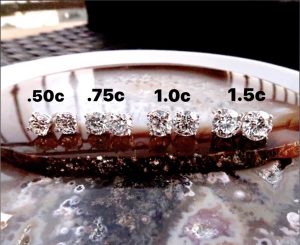
Buy at Below Carat Thresholds
There are price breaks for diamonds weighing just less than certain “magic” thresholds.
For example, diamonds in the .90ct – .99ct range can cost much less (depending on the exact color and clarity grade) than a diamond weighing exactly 1.00 ct. Since the majority of the weight of a diamond is in the bottom half of the stone, a small difference in weight won’t affect the circumference or how it appears when seen from the top.
Save some money and get a diamond that looks just as big as a more expensive one. Other price breaks occur just below 1.50 ct and just below each whole carat. Due to their demand, these below carat threshold diamonds are much harder to find than the diamonds at and above thresholds, but always worth a try.
Buy based on millimeters of face diameter of the diamond
Did you know a 1.25 carat round diamond could look like a 1.5 diamond carat once it is set, based on its diameter of the face of the stone? For instance, approximately 7.3 mm is a typical 1.5 carat diamond with good proportions/cut. A 1.25 carat could also have close to a 7mm diameter on its face with good proportions, making it look just as big as the 1.5 carat stone!
If you are dying for that 2-carat ring but can’t afford it at the quality level you want, try to search by table diameter length (8mm) and see if that helps with your search.
When possible, avoid black inclusions
The reality of a SI2/I1 stone is that it will likely have some black inclusions. As long as you can’t see them with your naked eye, it’s ok. But if you have many choices, I recommend picking stones with inclusions that aren’t black.
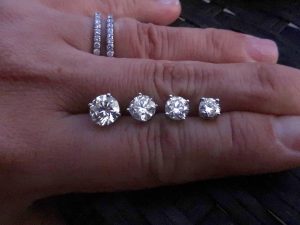
So did this insider’s guide to choosing the perfect diamonds help? If so, please forward to others you think would find it helpful too! And don’t forget to subscribe for me to pop into your inbox when I publish new posts. Also, check out my posts How to Invest in a Quality Diamond Eternity Ring and Navigating Through the Los Angeles Jewelry District like a pro .
Finally, if you’re looking for diamonds, I look forward to guiding you to have the easiest and most fun purchasing experience you’ve ever had for your investment jewelry! Cheers to seeing no shade, only sparkle!

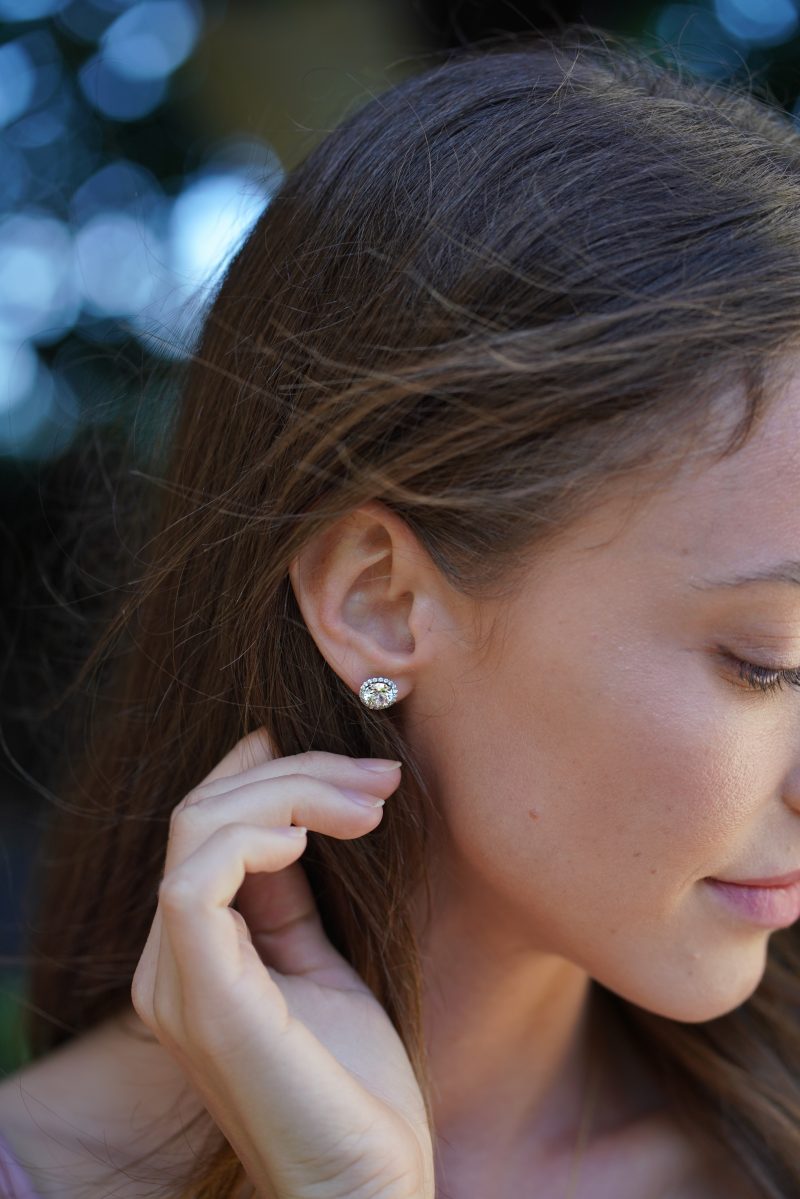
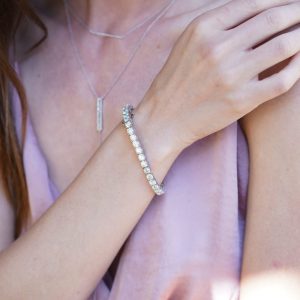
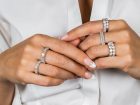
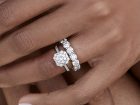
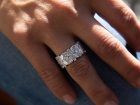
[…] Source by ozofsalt […]